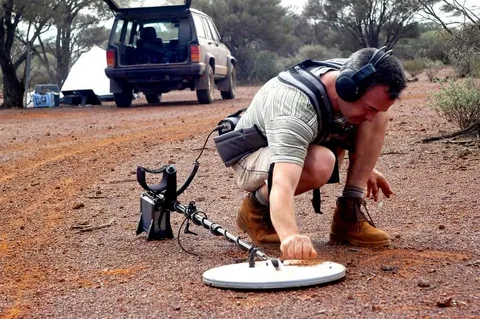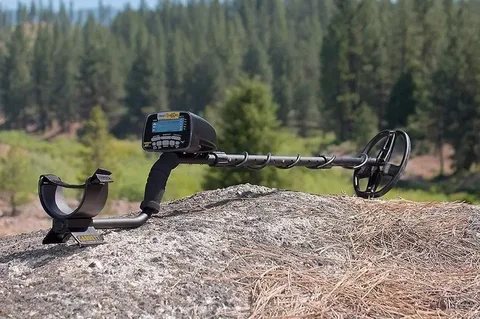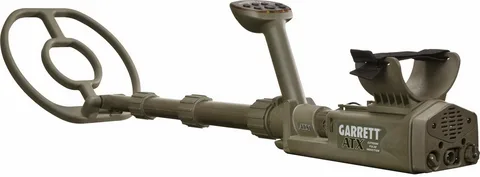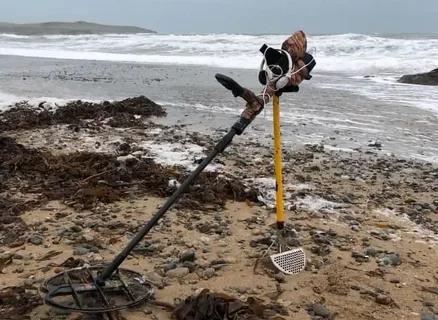
Exploring the Best Excavation Equipment for Trenching and Pipe Laying
Excavation equipment for trenching and pipe laying plays a critical role in construction and infrastructure projects. From digging trenches for utility lines to laying pipes for sewage and drainage systems, having the best excavation equipment is essential for efficiency and accuracy. In this article, we will explore some of the top excavation equipment for trenching and pipe laying, and معدات تنقيب 24 (20/11) discuss their features and benefits for various types of projects. Whether you are a contractor, engineer, or construction enthusiast, understanding the options available for excavation equipment is crucial for successful project completion.
Excavation equipment for trenching and pipe laying comes in various types and sizes to meet different project requirements. Some common types of equipment used for these tasks include excavators, trenchers, backhoes, and pipe layers.
Excavators are versatile machines that can be used for a wide range of excavation tasks, including trenching and pipe laying. They are equipped with a bucket attached to a hydraulic arm that can be used to dig trenches and handle pipes.
Trenchers are specifically designed for creating narrow trenches in the ground. They come in various sizes and configurations, including walk-behind, ride-on, and attachment options for other construction equipment.
Backhoes are another type of excavation equipment commonly used for trenching and can also handle pipe laying tasks. They are versatile machines equipped with a digging bucket on the back end and a loader bucket on the front end, making them suitable for various excavation and material handling tasks.
Pipe layers are specialized machines designed specifically for laying pipes. They are equipped with a side boom attachment that allows for precise placement of pipes during the construction of pipelines.
When choosing the best excavation equipment for trenching and pipe laying, factors to consider include the specific requirements of the project, the type of soil and terrain, the depth and width of the trenches, and the size and weight of the pipes to be laid. It is important to select equipment that is suitable for the job at hand in order to ensure efficient and safe completion of excavation tasks.
محتوى المحتوى
The Essential Guide to Excavation Equipment for Trenching and Pipe Laying

The Essential Guide to Excavation Equipment for Trenching and Pipe Laying provides a comprehensive overview of the various types of equipment used in excavation projects, specifically for trenching and pipe laying. The guide covers a range of equipment including trenchers, backhoes, excavators, and pipe laying machines, discussing their uses, advantages, and potential limitations. It also explores safety considerations and best practices when using each type of equipment, making it an essential resource for construction professionals and project managers involved in trenching and pipe laying projects.
Choosing the Right Excavation Equipment for Trenching and Pipe Laying

When choosing the right excavation equipment for trenching and pipe laying, it’s important to consider the specific requirements of the project. Factors to consider include the depth and width of the trench, the type of soil and terrain, and the size and weight of the pipes to be laid. Excavation equipment options for trenching and pipe laying include backhoes, mini excavators, trenchers, and horizontal directional drills. Carefully evaluate the capabilities and limitations of each option to ensure that the chosen equipment is well-suited for the job. Additionally, prioritize safety and efficiency when selecting the equipment to minimize risks and maximize productivity on the worksite. It’s advisable to consult with equipment experts and experienced operators to make an informed decision.
ٍSee Also: Maximizing Efficiency with Portable Drilling Rigs in Exploration
Safety Tips for Using Excavation Equipment for Trenching and Pipe Laying

Here are some safety tips for using excavation equipment for trenching and pipe laying:
1. Before beginning any excavation work, always locate and mark any underground utilities to avoid accidental damage.
2. Ensure that all personnel on the worksite are trained and experienced in operating excavation equipment and handling trenching and pipe laying tasks.
3. Inspect the excavation equipment regularly for any signs of wear, damage, or malfunction. This includes checking for hydraulic leaks, worn-out components, and loose fittings.
4. Use a designated spotter to assist the equipment operator in guiding the machinery and ensure the safety of workers in the vicinity.
5. Always use proper personal protective equipment, including hard hats, steel-toe boots, high-visibility clothing, and hearing protection when working near excavation equipment.
6. Keep a safe distance from the excavation equipment while it is in operation, and never walk under a raised load or bucket.
7. Make sure to properly brace and support trench walls to prevent collapses, and have a competent person inspect the trench regularly for signs of instability.
8. Follow all manufacturer instructions and safety guidelines for the specific excavation equipment being used.
By following these safety tips, you can help ensure the well-being of workers and minimize the risk of accidents when using excavation equipment for trenching and pipe laying.
Common Mistakes to Avoid When Using Excavation Equipment for Trenching and Pipe Laying

– Not properly inspecting the site for underground utilities before beginning excavation
– Failing to obtain necessary permits and permissions for excavation work
– Overestimating the capabilities of the excavation equipment and attempting to trench or lay pipe in unsuitable ground conditions
– Neglecting to properly slope or bench trench walls to prevent cave-ins
– Failing to use proper safety equipment, such as trench boxes or shoring, to protect workers from excavation hazards
– Forgetting to call 811 or the local utility notification center before digging to have underground utilities marked
– Ignoring OSHA safety regulations and guidelines for excavation work
– Not having a plan in place for dealing with potential hazards and emergencies during excavation work
– Disregarding proper maintenance and inspection of excavation equipment before and during use
– Trying to rush the excavation process and not taking the time to do the job safely and accurately.
The Environmental Impact of Excavation Equipment for Trenching and Pipe Laying
Excavation equipment used for trenching and pipe laying can have a significant environmental impact. The operation of heavy machinery releases greenhouse gases, such as carbon dioxide and methane, contributing to climate change. Fuel consumption also leads to air and noise pollution, impacting both the local environment and surrounding communities. Additionally, the disruption of soil and vegetation during excavation can lead to erosion and habitat destruction, potentially harming local wildlife. Proper planning and management of excavation activities, along with the use of more environmentally friendly equipment and practices, can help mitigate these environmental impacts.
The Latest Technological Advances in Excavation Equipment for Trenching and Pipe Laying
ٍSee Also: Step-by-Step Guide to Operating and Maintaining Heavy Excavation Equipment
The latest technological advances in excavation equipment for trenching and pipe laying include the use of GPS technology for precision guidance and accurate digging. This allows for more efficient and precise excavation, reducing the need for rework and improving overall project timelines. Additionally, the use of advanced hydraulic systems and automated controls help to increase productivity and safety on job sites. Some equipment also incorporates telematics and remote monitoring capabilities, allowing for real-time tracking and management of equipment performance and maintenance needs. Finally, there are also advancements in materials and designs of trenching and pipe laying equipment, leading to increased durability and longevity.
Maximizing Efficiency with Excavation Equipment for Trenching and Pipe Laying
Maximizing efficiency with excavation equipment for trenching and pipe laying involves using the most appropriate and advanced machinery for the job. This can include specialized excavators, trenchers, and pipe laying equipment that are designed to streamline the process and reduce the amount of time and labor required. Additionally, proper maintenance and regular servicing of the equipment is essential to ensure optimal performance and efficiency. Furthermore, implementing effective project planning and coordination can help minimize downtime and maximize productivity on the job site. Using technology such as GPS systems and telematics can also improve efficiency by providing accurate positioning and monitoring of the equipment during excavation and pipe laying activities. Overall, maximizing efficiency with excavation equipment for trenching and pipe laying requires a combination of advanced machinery, maintenance, planning, and technology integration.
Maintenance and Care for Excavation Equipment for Trenching and Pipe Laying
ٍSee Also: Discover the Latest Advances in Rock Drilling Equipment
To properly maintain and care for excavation equipment used for trenching and pipe laying, it is important to follow a regular maintenance schedule as recommended by the manufacturer. This may include checking and changing the oil, lubricating moving parts, and inspecting for any signs of wear or damage. It is also important to clean the equipment after each use to remove any dirt and debris that may cause damage or reduce efficiency. Additionally, proper storage of the equipment when not in use can help prolong its lifespan. Regular inspections by a qualified technician can also help identify and address any maintenance or repair needs.
Effective Training for Operating Excavation Equipment for Trenching and Pipe Laying
Effective training for operating excavation equipment for trenching and pipe laying should cover proper machine operation, safety procedures, and best practices for the specific tasks involved. This includes understanding soil types, potential hazards, and how to interpret site plans for trenching and pipe laying. Trainees should also be familiar with equipment maintenance and troubleshooting, as well as emergency procedures. Additionally, hands-on practice and simulation exercises can help reinforce learning and build competency in operating excavation equipment for these specific tasks. Ongoing refresher training and regular safety reviews are also important to ensure operators remain competent and knowledgeable in their roles.
The Future of Excavation Equipment for Trenching and Pipe Laying: Trends and Innovations
Top heavy-duty excavation equipment for construction sites
The future of excavation equipment for trenching and pipe laying is set to see several trends and innovations. One of the key trends is the increasing use of advanced technologies such as GPS and telematics for more precise and efficient excavation processes. These technologies help in optimizing excavation activities and reducing the potential for errors.
Another trend is the development of more environmentally friendly excavation equipment. This includes the use of alternative fuels and electric-powered equipment to reduce carbon emissions and minimize the environmental impact of construction activities.
In terms of innovation, there is a growing focus on the development of autonomous excavation equipment. This includes the use of robotics and artificial intelligence to automate certain aspects of excavation and pipe laying, improving safety and productivity.
Additionally, the integration of advanced monitoring and control systems is expected to become more common in excavation equipment, allowing for real-time monitoring of machine performance and remote equipment operation.
Overall, the future of excavation equipment for trenching and pipe laying is moving towards more advanced, efficient, and sustainable solutions through the adoption of new technologies and innovative approaches to construction.